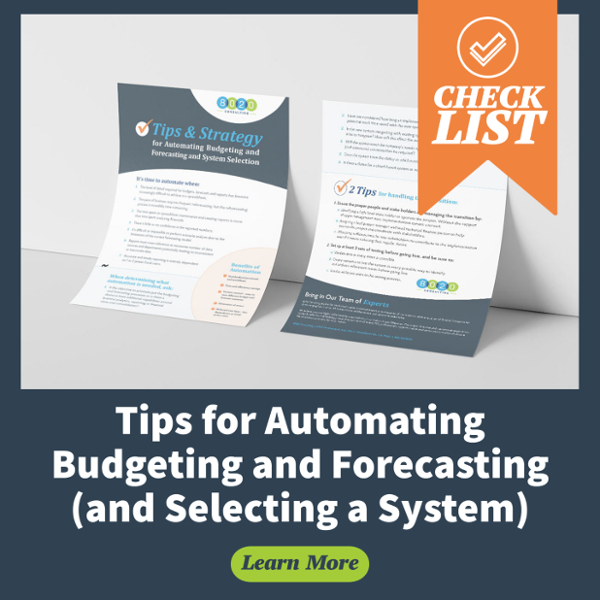The annual budget process can be strenuous not only to the Finance team, but to all parties involved. In the interest of your team’s sanity, we’ve compiled some simple tips for designing a successful budget process that relieves unnecessary stressors.
1. Start the budget process with the end in mind.
Make sure your budget templates are considered with results in mind. When building budget templates, it helps to think about the final budget decks you’ll need to prepare for board meetings. Do you have enough details to arrive at what you want to present to the board? For example, if the board is interested in employee utilization, do your budget templates solicit planned employee labor hours?
2. Build a realistic, intricate timeline.
A highly sensible budget needs input and collaboration from various departments. It’s important to make sure your timeline allows for interdependencies, reviews and reiterations. For example, if Operations cannot start its budget without sales plans, then the schedule should start with the Sales team. Also, once Operations completes its budget input, the timeline must allow for a review of the budgeted margins, and the process needs to allow for reiterations as deemed necessary.
3. Remember that buy-in to your budget process is critical.
The budgeting process is time-consuming for everyone involved. Make sure you get buy-in from each of the department heads about your timelines and the overall process you’re all going to follow. Getting everyone committed to the process helps to ensure success. Similarly, communication between all departments throughout the process will allow you to identify problem areas that you can address over time.
4. Create standardized decks across business units.
In many cases, various departments want to present their budget numbers to the board in different ways. Board review then becomes challenging as numbers are presented inconsistently. Also, varying presentations imply highly manual ways of preparing the decks, which are prone to errors and can cause unnecessary strain on your finance team. Before starting the budget process, create standardized budget decks that your team can commit to doing, then solicit input and agreement from department heads and executives.
5. Focus on continued process improvement.
After the budget process is complete, solicit feedback from everyone involved. Part of your process should include an effort to enhance next year’s process with pointers learned from this year. As noted earlier, make sure you communicate across departments and even catalog pain points to revisit and improve in future.
6. Consider automating your budget process.
There are benefits of automating your budgeting, but it’s often that companies are unclear when they’ve crossed the threshold that would warrant automation. Our budget automation and system selection checklist offers some insight into when it makes sense to explore automation – and what to know about handling the transition:

Want More? Check out these related blogs about budgeting.
- “Practical Tips for Budgeting Using NetSuite & PBCS“
- “BI & EPM Planning and Budgeting: Automation and Acceleration Tips“
- “Oracle Planning and Budgeting Cloud: Benefits of the First Hyperion EPM Product“
